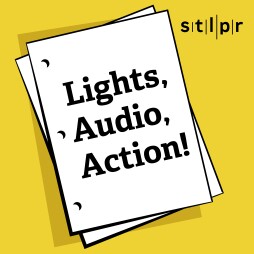1971
The FCC authorizes call letters KWMU and frequency 90.7 for a public radio station at the University of Missouri–St. Louis, initiated by Donald Driemeier who wrote the construction permit and hired Robert (Bob) W. Thomas to lead the station and hire a staff.

1972

On June 2, KWMU signed on the air for the first time. Ben Abell did weather reports and Bill Conway provided stock updates. The station aired primarily classical music and high-quality news, as well as jazz, blues, bluegrass, and ragtime music shows, plus local arts interviews throughout the day. Initially KWMU had a one-person news department, with Robert (Bob) Eastman as news director. The manager of music and promotion was Jackie Fisher. Staff also included two full-time announcers and an engineer (who died in a plane crash a year later).

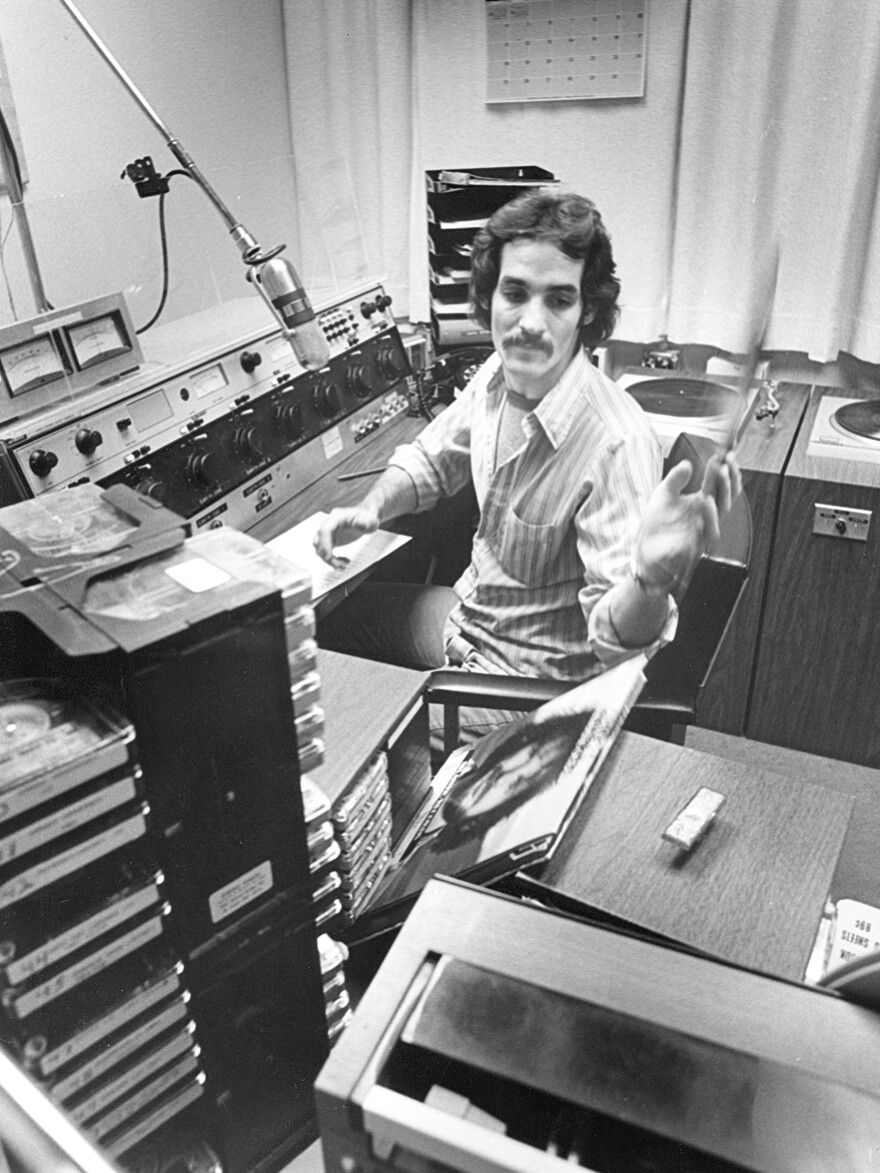
1973
Additional music and news staff were added.

1974
First listener contribution is given by Harry G. Mellman with a $100 check.
Longtime staff member Mary Edwards is hired as music assistant. Finances were tight, with Edwards recalling watering down Liquid Paper for typing edits because they couldn’t buy more office supplies until the next fiscal year began.


1975
KWMU holds its first membership drive, with three phone lines. Over $7,200 was pledged during the fundraising campaign. Members received subscriptions to the station’s program guide, which contained music program listings and articles.
Barb White Pierce is named promotions director.

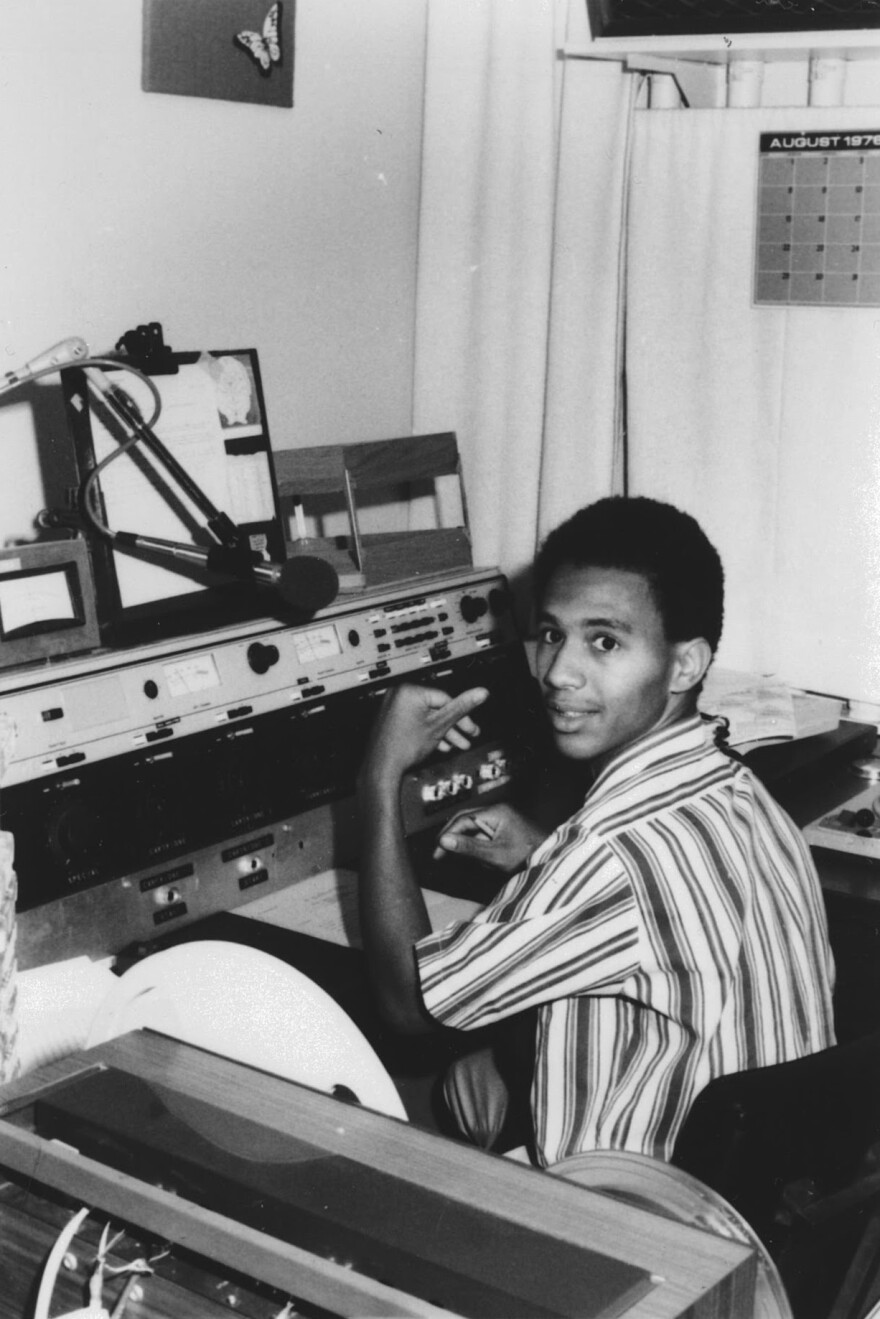
1976


1977
“Studio Set,” KWMU’s community support organization, is incorporated.
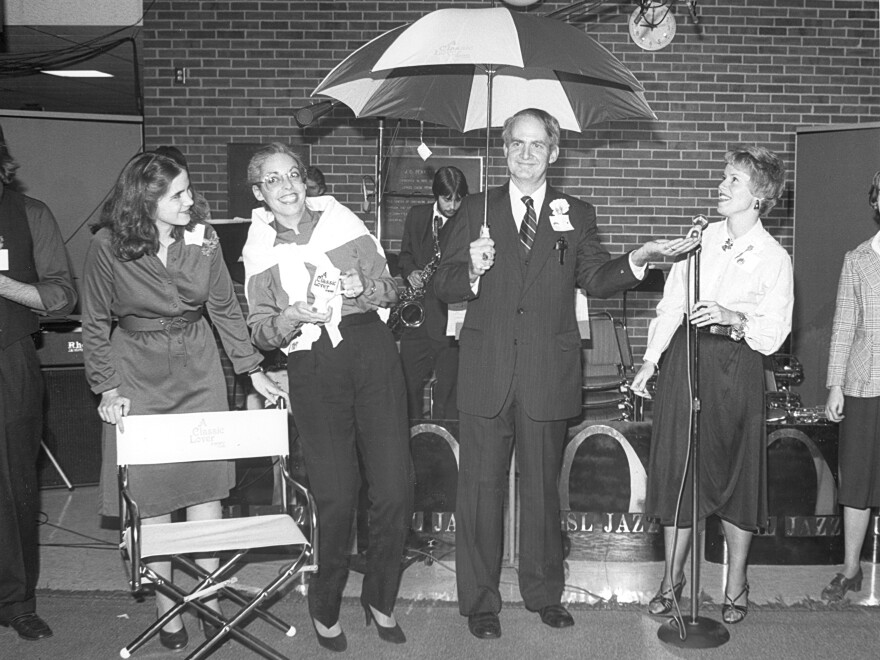
1978

1979

New satellite interconnection system allows recording of programs while broadcasting others and greatly improves sound quality. Before the satellite interconnection system, programs arrived on reel-to-reel tapes, delivered by mail, bus, or even plane.
Mary Edwards becomes the station’s first program director who handles acquisition of programs. They were not yet automated.


1980
NPR’s Morning Edition with Bob Edwards debuts on KWMU on September 15.
Our local newsroom includes three staff members. Student members of the staff receive professional training and supervision and some went on to impressive careers at NPR.

1982
NPR’s All Things Considered was first broadcast by KWMU on May 17 with hosts Susan Stamberg and Sanford Ungar.
Dennis Owsley begins hosting local jazz show, Jazz Unlimited, a show that aired until he retired in 2019.


1983
KWMU was the first station in St. Louis to play music from CDs.

1984
KWMU made history by becoming the first station in the US to broadcast ambisonic programs, which give the listener 360 degrees of sound, like the experience of a live performance.


1985

Morning Edition with Bob Edwards broadcasts live from KWMU studios from September 25-27.

1990
The name of KWMU’s community board is changed to “Friends of KWMU, Inc.”

1991
UMSL Chancellor Blanche M. Touhill receives the “Eugene L. Asher” Award for distinguished service to public radio, nominated by KWMU.


1992
KWMU installs a new transmission system and increases the station’s power to 100,000 watts.
The station held its first “Love of KWMU” Valentine’s Day fund drive where listeners received thank-you gifts of candy or roses. While these “Love Drives” were successful for many years, the fulfillment of the thank-you gifts all on February 14 became logistically difficult as support grew. The theme later shifted.
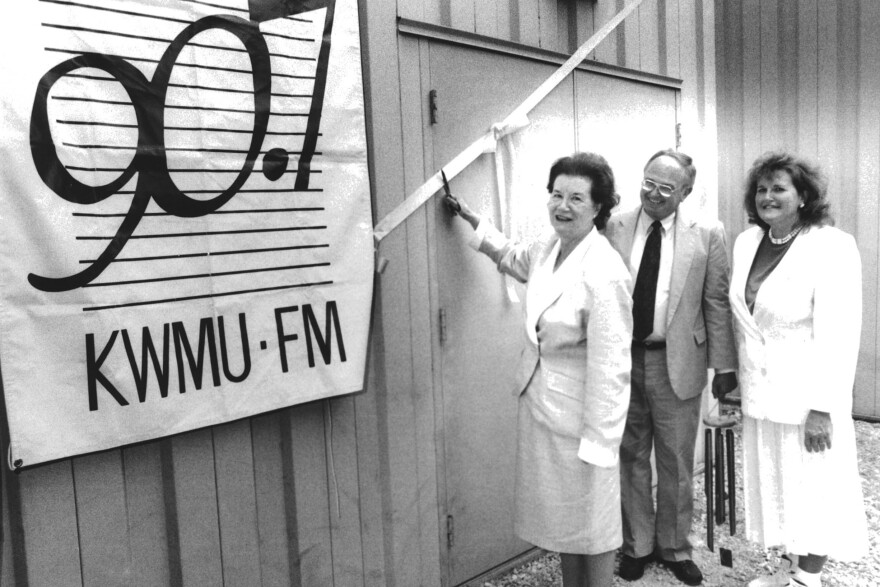


1993
KWMU hosts a live national broadcast in St. Louis of Whad’Ya Know? With Michael Feldman and a month later hosts a live national broadcast of A Prairie Home Companion.

1994
NPR President Delano Lewis came to St. Louis to help KWMU kick-off its “campaign for Excellence,” an equipment replacement project.

1995
KWMU’s staff won a record 22 state, regional and national awards.
A local arts program, Cityscape, launches. The show runs until 2016, when St. Louis on the Air begins airing five days per week instead of four.

1996

The station became St. Louis’ first FM news station, when it moved to a news, talk and entertainment format with national programs from National Public Radio and Public Radio International.
St. Louis on the Air debuts on September 3, presenting a local hour of interviews with regional newsmakers and taking calls from listeners.
Reporter Mark Manelli wins the station’s first National Edward R. Murrow Award.


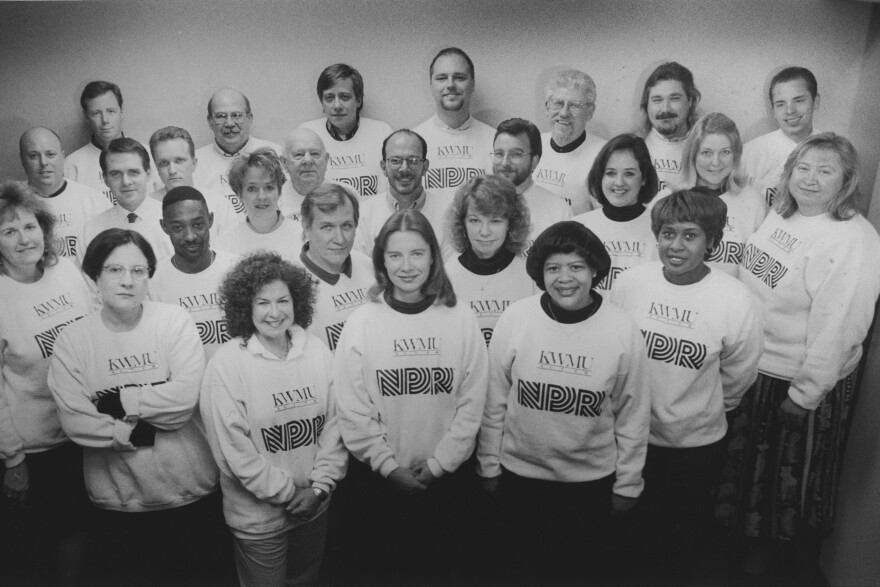
1997
KWMU launches its website, kwmu.org.
KWMU receives first place for excellence in its Corporate Support Program in national DEI competition.
For the first time ever, KWMU carried the Missouri and Illinois governors’ State of the State speeches live. They were the only station in St. Louis to cover Governor Carnahan’s address.
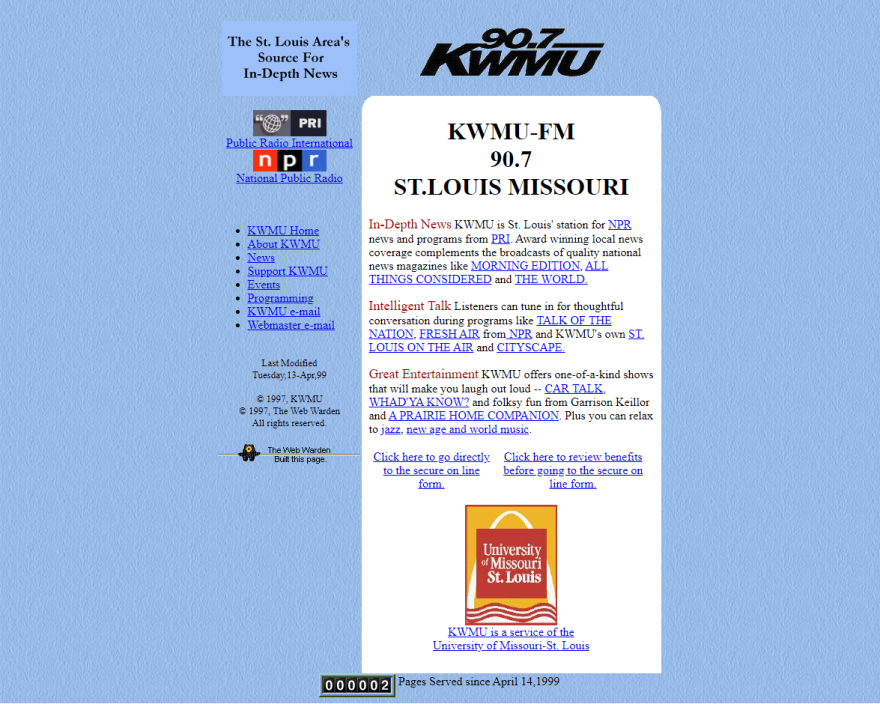
1998
For the first time in the station’s history, members contributed more than $1 million to the station.
This year began secure website on-line pledging, with 268 members pledging nearly $19,000 online.
KWMU introduced the Cornerstone Society, recognizing donors who make annual contributions of $1,000 or more.

1999
The Donald H. Driemeier Endowment Fund was established, as a means to fund local programming for regional and national distribution for many years to come.

2000
Corporate support topped $480,000.
KWMU wins a landmark case in Federal court by defending the right to decline to accept underwriting support from the Ku Klux Klan.

2001
KWMU begins offering online audio streaming of programming, taking KWMU broadcasts worldwide.
The Fall Membership Drive brings in a record number of new members.
The station reaches a high weekly listening audience of 172,600 in winter 2001.



2002
KWMU celebrates 30 years on June 2.
Public affairs program, St. Louis on the Air receives the Best Public Affairs Program award at the St. Louis Achievement in Radio (AIR) Awards.

2003
KWMU website kwmu.org wins the first of many regional Edward R. Murrow awards from the Radio and Television News Directors Association.

2005
KWMU begins podcasting with local news, commentaries, St. Louis on the Air and Cityscape podcast feeds.
The station is honored by the Press Club of Metropolitan St. Louis as a Media Honoree of the Year.


2006
KWMU begins broadcasting in HD, completing an all-digital transmission system.
2007
KWMU celebrates 35 years on June 2.
The station reaches a new high in its weekly listening audience, 190,500 in the spring.
KWMU adds a Missouri Statehouse Reporter.
KWMU news producer Adam Allington reports from Iraq while embedded with the 10th Psychological Operations Battalion from Jefferson Barracks.
After 34 years, April 29th marked Ben Abell’s last day on the air.



2008
NPR’s Diane Rehm celebrates KWMU’s 35th Anniversary in March. Proclamations from the City of St. Louis and St. Louis County are issued in honor of 35 years in public broadcasting.
In September, 2008, a second HD channel and stream, The Gateway, launches with an Adult Album Alternative (AAA) music format mixed with talk programs from NPR, APM, and PRI.



2009

The station name, “KWMU,” is rebranded to St. Louis Public Radio and the primary website URL becomes STLpublicradio.org. “KWMU” remains the call letters for 90.7 FM.


2010
A third digital stream launches, Classical 90.7 KWMU-3, 24-hours of classical music.
Live Saturday night performances of the St. Louis Symphony Orchestra begin from Powell Hall.



2011
Construction of UMSL at Grand Center begins.
The station’s mobile app launches.




2012
Just after celebrating 40 years in service, St. Louis Public Radio begins broadcasting from its new 27,000-square-foot facility, UMSL at Grand Center, doubling the number of studios, increasing newsroom space for more reporters and producers, and adding a large community room for events and live broadcasts.
St. Louis Public Radio starts broadcasting on 90.3 WQUB- in Quincy, IL after acquiring the station from Quincy University, adding more than 120,000 new potential listeners in Quincy and Hannibal, MO.
The Politically Speaking podcast launches on September 20.




2013
The Board of Curators of the University of Missouri System officially approves the merger of St. Louis Public Radio and The St. Louis Beacon, growing St. Louis Public Radio’s staff to about 60 employees, with 40 dedicated to news, digital, and program production. The combined newsroom is led by Margie Freivogel.
STLPR receives a Champion of the Arts Award from the Arts & Education Council.
Arch City Music Hour launches, with interviews and performances from notable St. Louis musicians, bringing local music content to The Gateway KWMU-2 and adding a third local music production to the KWMU-1 lineup.


2014
The We Live Here podcast launches.
On September 13, 2014 a new collaboration of the Nine Network of Public Media, the University of Missouri–St. Louis, and St. Louis Public Radio begins with the opening of the Public Media Commons — a 9,000-square-foot, open-air media space in the Grand Center Arts District of St. Louis. More than 1,000 people participate in the inaugural event.
The station reaches a new high in its weekly listening audience, 220,700, in the summer as Ferguson, MO becomes a focus of the Black Lives Matter movement for racial justice.


2015
St. Louis on the Air produces two town hall meetings in Ferguson in August 2014 and March 2015. The events, moderated by NPR’s Michel Martin, were recorded for broadcast for listeners in St. Louis and 25 other public radio stations across the country. More than 650 people attend these two forums.
The Gateway KWMU-2 stream and HD radio music channel changes format from Adult Album Alternative (AAA) music to jazz, with the national 24-hour service JazzWorks.
Launch of Cut & Paste podcast.


2016
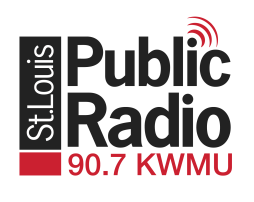
St. Louis Public Radio newsroom’s One Year in Ferguson, a digital news reporting project, produced in 2015, earns national recognition with an Online News Association Award and a Facebook Media Futures Award.
After many regional Edward R. Murrow Awards, the station’s website stlpublicradio.org is selected for a National Edward R. Murrow Award.

2017
St. Louis Public Radio starts broadcasting on 88.5 KMST in Rolla, MO and 96.3 in Lebanon, MO after the operation moved from Missouri S&T to UMSL.
Mary Edwards is inducted into the St. Louis Media Hall of Fame.
St. Louis Public Radio launches its first smart speaker “skill,” offering local newscasts with a voice command on Amazon Alexa devices.

2018
Local reporting expands to the Rolla region with the addition of a new Rolla correspondent.
Longtime staff member Mary Edwards retires from her role as executive producer of St. Louis on the Air after more than four decades with St. Louis Public Radio. She remains on staff part time to continue producing the St. Louis Symphony Orchestra Broadcast.




2019
Launch of The Gateway podcast, with local news updates and features every weekday.
Launch of Mini Journalism School educational series with the goal of increasing media literacy.
Launch of the St. Louis Public Radio Photojournalism Prize, an educational outreach program for high school students.
We Live Here podcast receives an International Kaleidoscope Award from the Radio & Television News Directors Association.
Local news coverage expands in the metro east with hiring of the station’s first dedicated metro east reporter.


2020
St. Louis Public Radio joins Public Media For All, a coalition to further diversity, equity and inclusion in public media.
Launch of Wake Up to Politics podcast.
Launch of the Where It Hurts podcast, in partnership with Kaiser Health News, winning a Regional Edward R. Murrow Award 2021 and becoming one of three national Scripps Howard Award finalists for excellence in radio/podcast coverage.
The St. Louis on the Air podcast receives over 1 million downloads for the first time.
The repeater on K242AN FM in Lebanon breaks and is taken off air permanently.
Launch of a new content management system for improved presentation of local news coverage on stlpublicradio.org.
Jazz music stream added in Quincy to WQUB-2.
The website audience reaches a new peak with over 7.2 million sessions in fiscal year 2020 as audiences seek local information about the pandemic.

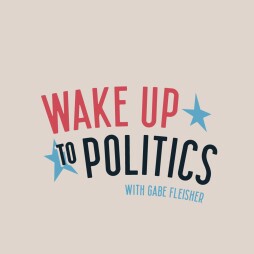


2021

St. Louis Public Radio relaunches its primary brand, with a new visual and sonic logo, brand voice, brand narrative, standards for sub-brands and brand architecture, officially using “STLPR” as a shortname and changing the primary website URL to stlpr.org.
A local jazz music show returns to the air with the launch on September 13 of The Next Set: Live From Jazz St. Louis.
St. Louis on the Air celebrates its 25th anniversary in production.


2022
A new transmitter is installed in St. Louis.
Launch of Lights, Audio, Action! podcast.
The photojournalism contest for high-school students continues for a second year and is renamed to the STLPR Teen Photojournalist Prize. Photojournalists from other media outlets partner on the judging for the awards and photography exhibit at St. Louis Public Radio.
STLPR celebrates its 50th anniversary on the air.

